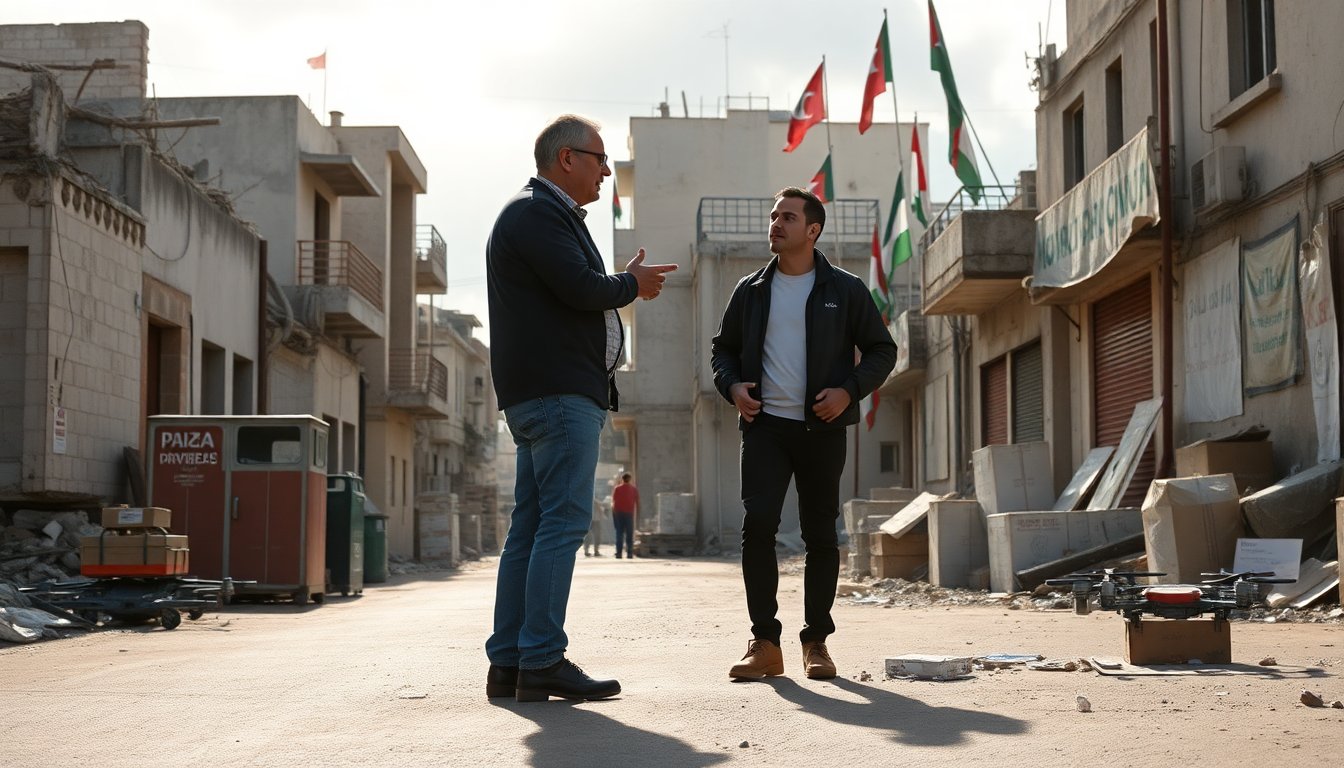Table of Contents
In an important diplomatic move, U.S. figures Witkoff and Kushner recently traveled to Gaza, coinciding with heightened efforts by Hamas to reinforce its influence in the region. This visit underscores the ongoing complexities of the situation as both political and humanitarian needs converge in this troubled area.
The backdrop of this visit is significant, as it comes at a time when the U.S. is establishing a new center in Israel. This initiative aims to monitor the existing cease-fire and facilitate the distribution of humanitarian aid to affected populations.
The role of the U.S. in humanitarian efforts
The United States has been a pivotal player in the Middle East for decades. With its latest endeavor, it seeks not only to stabilize the situation but also to provide much-needed aid to those impacted by the ongoing conflict. The new center is designed to serve as a hub for coordinating relief efforts, ensuring that aid reaches those in need effectively.
Establishment of the aid monitoring center
Set to be operational in the immediate future, this center will focus on overseeing the distribution of humanitarian assistance. By monitoring the cease-fire, the U.S. aims to foster an environment where aid can flow freely without the threat of violence interrupting vital services. This initiative is crucial as it aligns with international efforts to provide support to civilians caught in the crossfire.
Moreover, the center will collaborate with various organizations and stakeholders to ensure that the distribution process is transparent and efficient. This involves working closely with local authorities and humanitarian groups to identify areas most in need of assistance.
The implications of Hamas’ resurgence
As Hamas seeks to reassert its control over Gaza, the implications for the region are profound. The group’s efforts to regain authority have raised concerns among international observers regarding the potential for escalated conflict and its impact on humanitarian efforts. Witkoff and Kushner’s visit can be seen as a strategic move to engage with key players in the region while addressing urgent humanitarian needs.
Challenges to humanitarian aid distribution
The ongoing conflict presents numerous challenges to the effective distribution of aid. With Hamas in a position of power, the dynamics of how aid is delivered and who receives it are complicated. Aid organizations must navigate the political landscape carefully, ensuring that assistance reaches those who genuinely need it without becoming entangled in local power struggles.
Additionally, the influx of humanitarian aid may inadvertently bolster the authority of groups like Hamas, leading to further complications in peace efforts. Observers fear that the distribution of aid could be manipulated for political gain, creating a cycle that undermines long-term stability.
Looking forward: prospects for peace and aid
Despite the challenges ahead, the establishment of the U.S. center in Israel signals a renewed commitment to peace and humanitarian assistance. The involvement of figures like Witkoff and Kushner suggests that diplomatic efforts are still a priority for the U.S. government, even amid complex geopolitical realities.
As humanitarian needs continue to rise, the international community must remain vigilant and proactive. Engaging with local leaders and organizations will be essential in ensuring that aid is delivered effectively and that it supports the broader goal of peace in the region. The situation in Gaza remains precarious, but with sustained efforts and careful planning, there may be a path forward.
Ultimately, the visit by Witkoff and Kushner serves as a reminder of the intricate balance between politics and humanitarian efforts in the Middle East. As the U.S. moves forward with its plans, the focus must remain on alleviating the suffering of civilians while fostering an environment conducive to lasting peace.


